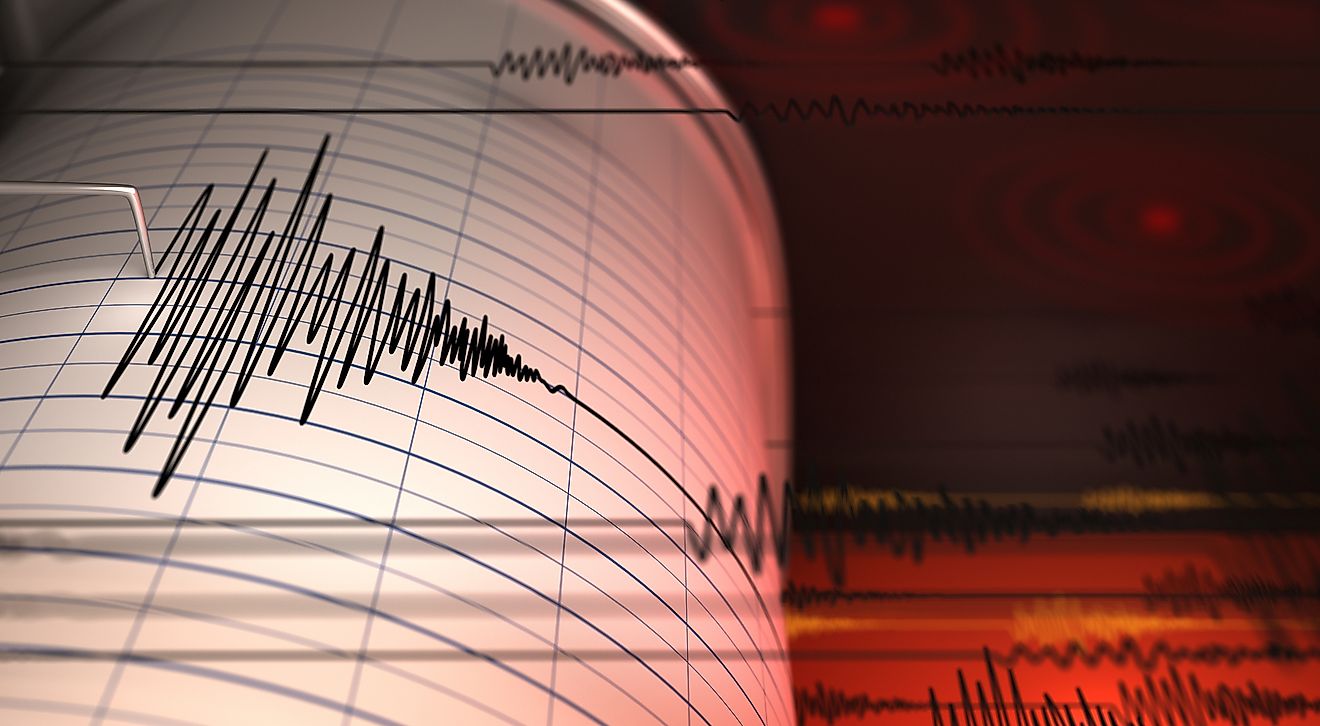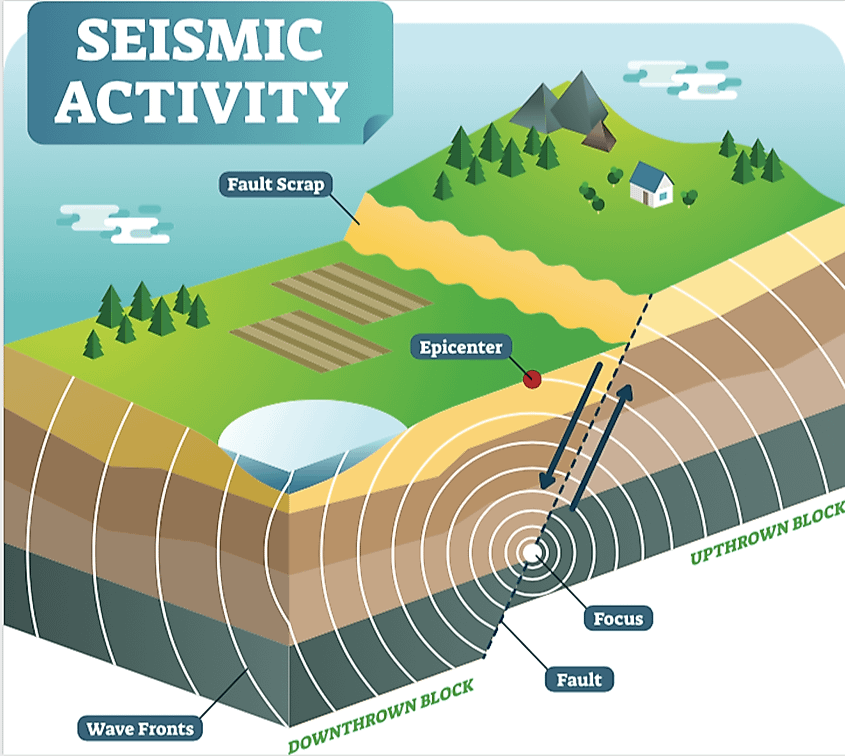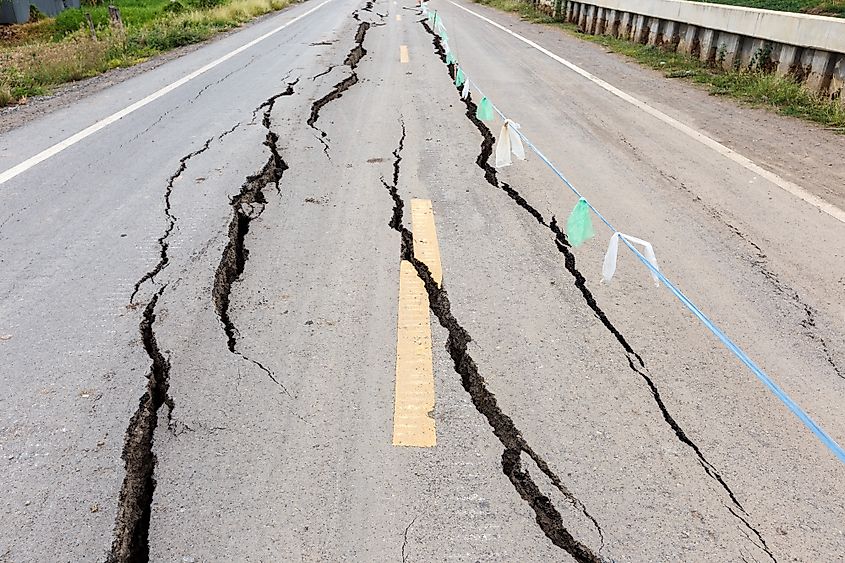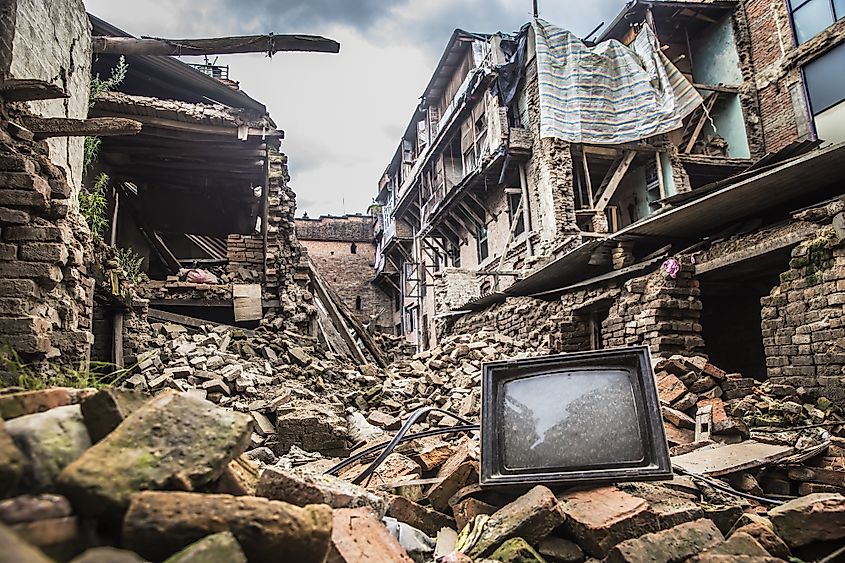Can Earthquakes Be Predicted?

- Earthquakes cannot be accurately predicted.
- Seismologists study fault lines to see activity of ancient earthquakes in order to better predict the future.
- Some fault lines have earthquake return times of thousands of years.
Someplace, somewhere in the world, an earthquake happened today. According to the United States Geological Survey (USGS), an earthquake actually happens each and every day on Earth. Some are larger quakes and others can be so small that no one will really notice they have happened. Only the scientists monitoring the very sensitive seismic instruments that detect them may know.
So, if you hear of someone who says they can predict earthquakes, you should be skeptical. Extremely skeptical. While earthquakes do occur often on our globe, they are still virtually impossible to predict accurately. The USGS states that a real earthquake prediction must include three elements. It must include the date and time the earthquake will take place, (very hard to do), as well as the exact location of the quake and how big it will be.
To date, the USGS states that scientists do not have the equipment or knowledge necessary to make this kind of prediction. So, no, earthquakes cannot be predicted. There are some changes in the environment that some say can indicate an earthquake is coming, but these are not reliable predictors.
Why So-Called Early Warning Signs Aren’t Reliable

It is widely believed in the scientific community that our planet is formed from large pieces of rock called tectonic plates. This is tectonic plate theory. These plates are the puzzle pieces that form Earth’s crust, and they can be a few hundred miles or kilometers wide, or up to thousands of miles wide. Tectonic plates can also be just under ten miles thick (15 km), or up to well over 100 miles thick (160 km). The area where two plates meet is called a fault line.
When an earthquake occurs, two tectonic plates have collided together. Earth’s plates are always moving, even if only slightly. Heat from Earth’s inner core, which is very hot, drives the plates to move around. Hot material from inside the Earth rises to the top of our planet’s crust where temperatures are cooler. The material then cools and sinks a bit. In this way, the Earth is like a large convection oven. All this movement sometimes causes plates to move drastically, which can result in an earthquake.

Before an earthquake happens, there are sometimes signals that one is coming. Sometimes smaller cracks appear in the Earth’s crust. This can cause a lot of things to happen. Ground water can rise up through the new cracks, and more radon, a radioactive gas in the ground, can be released into local water sources. There may even be changes in the environment’s electromagnetic activity. Sometimes birds and animals can also display odd behavior right before an earthquake strikes.
All of these signs sound like great ways to predict that an earthquake is about to happen. The trouble is, scientists say that some earthquakes happen without any of these early warning signs ever appearing or taking place. And at other times, these so-called typical signs appear and a quake never happens. Because of this, these signs are enticing, but not reliable indications that you can use to predict an earthquake.
Earthquakes originate many miles below Earth’s surface. It could be that there are warning signs down there, but scientists still find it hard to know what to look for when searching for key seismic signals underground.
What can we do to help protect humanity from the deadly dangers of a big earthquake? Here is what is now within our grasp.
Building Strong

In areas known to have earthquakes, it is important that engineers and architects use seismic design parameters when constructing new buildings. Some countries have this as a part of their national building code. Many calculations go into making a building safer in light of earthquakes.
In order to develop these guidelines, scientists document where earthquakes have happened, study earthquake hazard maps, and analyze seismic records to understand the threat of earthquakes in any given area.
Studying Fault Lines
As previously mentioned, fault lines exist where two tectonic plates meet on Earth’s crust. Seismologists study these faults to see what is happening in the present in terms of earthquakes and plate movement. They also study fault lines to deduce what has happened in Earth’s history, in order to better predict the future.
At present, researchers have catalog records of earthquakes on Earth from the past 100 to 150 years. The trouble is, some faults are believed to have what are called “return times” of thousands or even tens of thousands of years. This means that a fault line may have earthquakes near it every few thousand years, in a cycle. Our records are too young to show what is really happening. By studying fault lines and folds on Earth’s crust for evidence of ancient earthquakes, seismologists can better predict what may be about to happen in the future.
Unfortunately, earthquakes cannot be predicted accurately. This can have tragic outcomes for people but with more research and documentation, hopefully the future will provide humanity with the opportunity to avoid suffering through earthquakes altogether.











